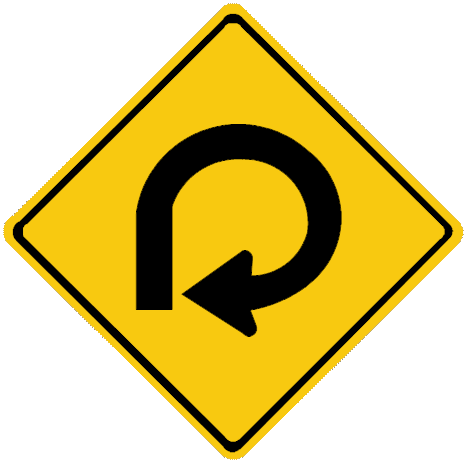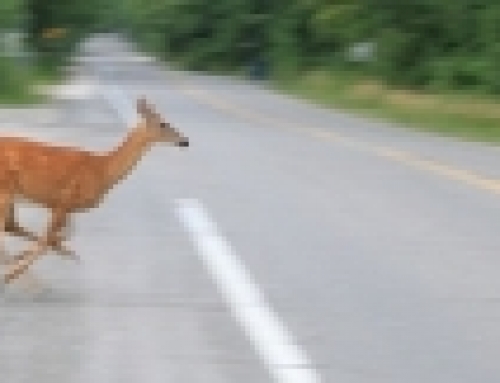 Cornering: Give Yourself a Brake
Cornering: Give Yourself a Brake
by
Dennis P. (Wombat) Dougherty
“In single vehicle motorcycle accidents, motorcycle rider error was present as the accident precipitating factor in about two-thirds of the cases, with the typical error being a slide-out and fall due to over-braking or running wide on a curve due to excess speed or under-cornering.” – The Hurt Report on Motorcycle Accidents
We all appreciate the thrill and zen of being one with your motorcycle as you are gracefully gliding through the twisties on a gorgeous day. When all goes well and everything is under control it doesn’t get much better. However surprises can occur, especially in blind turns when you can’t see what’s on the other side. You need to be in total control of your steed when entering a turn and prepared to execute safe ‘emergency’ maneuvers if nature, the environment, or some other vehicle ‘throws you a curve’.
The plain and simple fact is that proper cornering technique is a learned skill that requires practice…lots of practice… to get it right. There is a lot of physics going on in a cornering situation that is very different from straight and level riding. The impact of speed, turning radius, incline, and unforeseen obstacles amplify the need for careful pre-planning, anticipation, and precision execution to make it truly safe.
On the street, your goal is to maximize traction at all times. This gives you traction ‘reserve’ to react to surprises. Cornering uses traction. Braking uses traction. So, using both uses unnecessary traction. Ideally, a smart street rider would not brake in a turn unless it was absolutely necessary, i.e. some surprise debris or animal in the road or something that would require you to slow down. Tires only offer so much traction. Being leaned over in a turn and suddenly braking could indeed cause the front wheel to lock and the rider to lose control. So the best strategy is to get all your braking done before the turn and smoothly roll on the throttle to help manage traction all the way through the turn.
Cornering Technique
Different techniques and braking strategies are recommended for cornering when on the road or on the track. This article is focused on typical and basic street riding and cornering while underway.
The MSF teaches one of the more common approaches toward proper cornering technique; SLOW, LOOK, PRESS, and ROLL for cornering without braking. It is simple and easy to remember. As you approach a turn, call it out to yourself to help keep you focused on what to do and safely navigate the curve.
SLOW – to a proper entry speed before initiating the turn. Use both brakes while upright for maximum braking effect. Avoid braking in the turn. If you need to brake in the turn, it most likely means that you didn’t slow to a suitable entry speed.
LOOK – Prior to entering the turn, look through the turn and continue to do so as you progress through the turn. Keep your head up and eyes looking forward. Learn to read the landscape encompassing a turn. Tree lines and power lines can tell you a lot about what’s coming at you, including curve radius, and exit point. Anticipate what’s up ahead, plan your actions, and ride accordingly. Be prepared for surprises.
PRESS – Press the handlebars in the direction of the turn to initiate counter-steering and lean the bike to start the turn. Bikes must lean to turn. If you are going too fast, are facing a decreasing radius turn, and/or you think you are going wide, you should press and lean more into the turn to tighten up your turn. You may be surprised how far over your bike can lean, even after you hear the first grinding sounds of metal against roadbed. If this happens, don’t let it surprise you and panic. It’s better to trade some metal with road to keep control than to play a game of full contact ‘chicken’ with another vehicle or obstacle, become airborne over a cliff, or run off the road out of control.
ROLL – Roll on the throttle. Some say from the moment you initiate the turn and continue with power on throughout the turn. Others say as soon as you see your exit point, especially if it is an unfamiliar turn. Power can help increase traction, but it can also increase turning radius. If you start to roll on the throttle too early and encounter a decreasing radius turn or an assortment of obstacles in your way, then you may have to take some other action, like increasing lean angle, to successfully complete the turn without braking. In either case, power should be applied to help maintain traction and not for acceleration. Don’t accelerate until you can safely negotiate your exit point.
When You Must Brake in a Turn
No matter how hard we pre-plan and execute our cornering strategy, we all brake in the corners at some point. When that happens, you can (and almost always should) apply both brakes to optimize deceleration and control.
The MSF ‘recommends’ that you square the bike up first, and brake in a straight line, especially in an emergency maximum braking situation. (It is something that takes practice to be good and safe at). This gives you the most tire/road contact and lessens the sideways forces on your tires. However circumstances may not allow a squared-up, straight line stop in all cases. So what do you do?
First and foremost remember that you DO NOT have as much traction when the bike is leaned over. There is generally a smaller contact patch between tire and road. Some of that traction is being used to counteract the forces pushing your bike out of the corner. Using the brakes when leaned over requires much more ‘touch’ than when going straight and much caution is required when doing so…once again…practice it to get good at it and be safe. Yes, use both brakes. Using the rear only, especially in a turn, is a good way to lock the rear wheel. High siding in a turn can get really ugly!
Roll off the throttle but not so much that the engine braking contributes too much to the braking force and you lock the rear wheel. I would pull in the clutch and close the throttle to give better rear brake feel/control and it makes for one less thing to think about as well.
Remember that braking in corners will make the bike stand up and want to go straight out of the corner. Be prepared to increase the pressure on your downside handlebars to increase/maintain the proper lean angle so the bike remains on your original course in the corner. It also uses up some of your available traction, so caution is needed here as well.
Also remember that you are going to have to tilt the bike back upright if you are going to come to a complete stop. This is a natural reaction for most. But get to know that feeling so you can do it in one fluid motion and not panic and drop the bike. If you don’t have full control and the bike is in a lean when you come to a stop, don’t injure yourself trying to right the bike. Hop off as safely as possible and deal with the scuffs and scrapes later.
Tips & Tricks for Safe Cornering
When riding in a group, take cues from riders and other vehicles in front of you. Watch what they are doing as they move through the curve ahead of you. If you are following them at the same speed and you see them brake in the turn ahead of you, it most likely means they entered the turn too fast. Use your brakes to slow down if you haven’t entered the turn yet. If you have, roll off your throttle to avoid using the brakes and be prepared to increase your lean angle.
As mentioned earlier, read the road ahead. Usually Mother Nature and the DOT give you some hints about what’s around the bend. Power lines, tree lines, road contours, incline, bank angle, all are indicators of what’s up ahead. Learn to look for those signs, understand what they mean, and use them to plan and execute your cornering strategy.
Take an advanced riding course such as Stayin’ Safe to raise your skill level in cornering. Tom Malia, Larry Scalzitti and I took the course a couple of years ago in western Wisconsin. We did over 2,000 curves in 500 miles over 2 days. We certainly came away with improved technical cornering skills related to entry and exit strategies, but more importantly we increased our knowledge of how our bikes handled during cornering and the limits of our own comfort zone with speed management.
Practice! Practice! Practice!
I can’t say enough about this. The absolute WRONG time to learn about proper cornering technique is during a turn, especially a blind one, downhill, with decreasing radius, and obstacles on the road. No matter how many years you have been riding, we can all use some polishing up on our basic motorcycle handling skills… especially the ones that can go wrong quickly and hurt you. Practice good cornering technique on some familiar roads and turns. Test the limits of your handling skills of small radius turns (both slow speed and road speed), emergency braking, and obstacle avoidance during cornering on an empty parking lot. Use every turn you make as a lesson in proper cornering speed management and execution.
When in a curve, it’s better to err on the side of too slow than too fast. You can’t go through a turn too slow… Remember, when approaching a curve, give yourself a brake!
Ride Safe!
Note: Additional content sources and quotes include the MSF and various websites and blogs.





